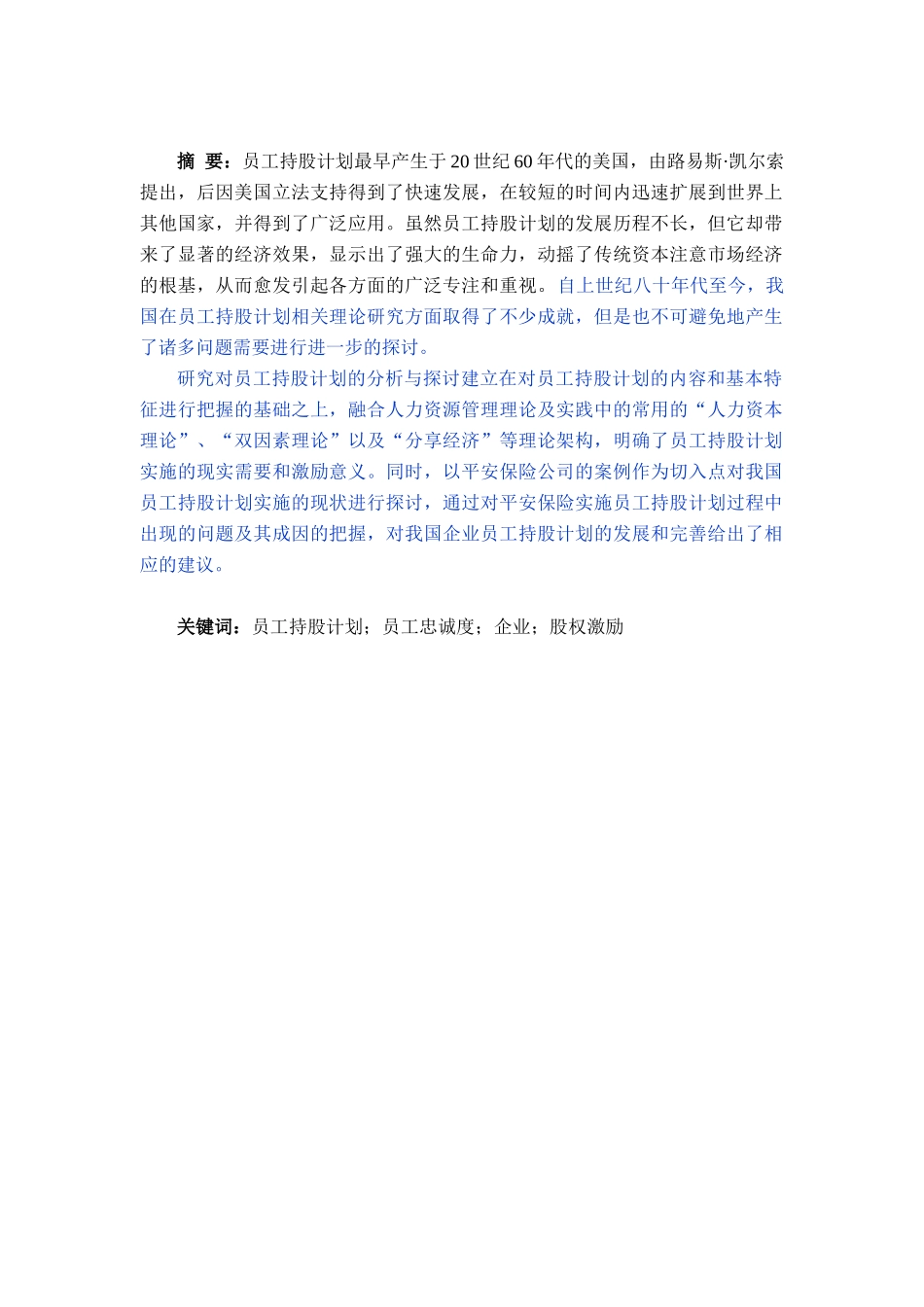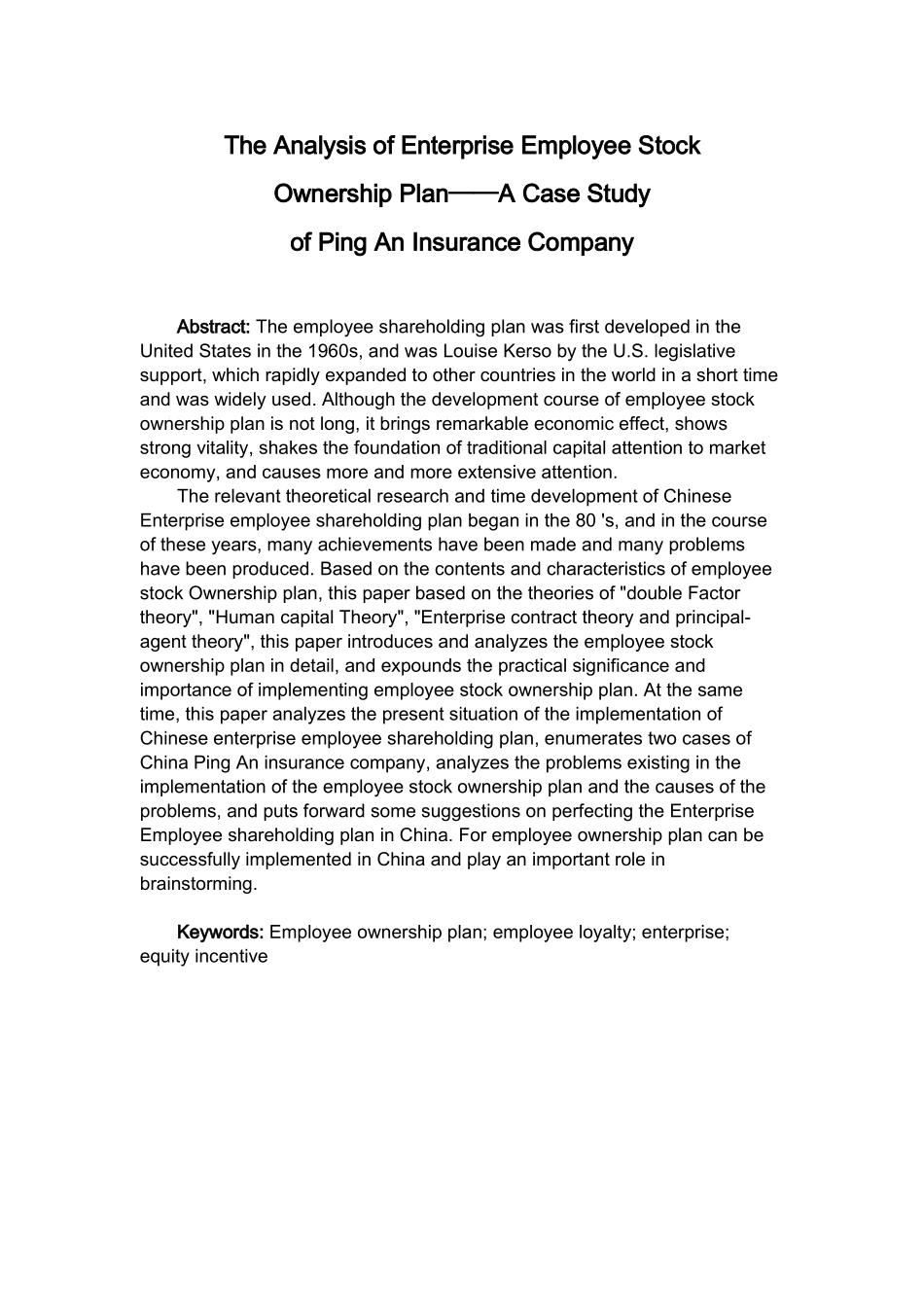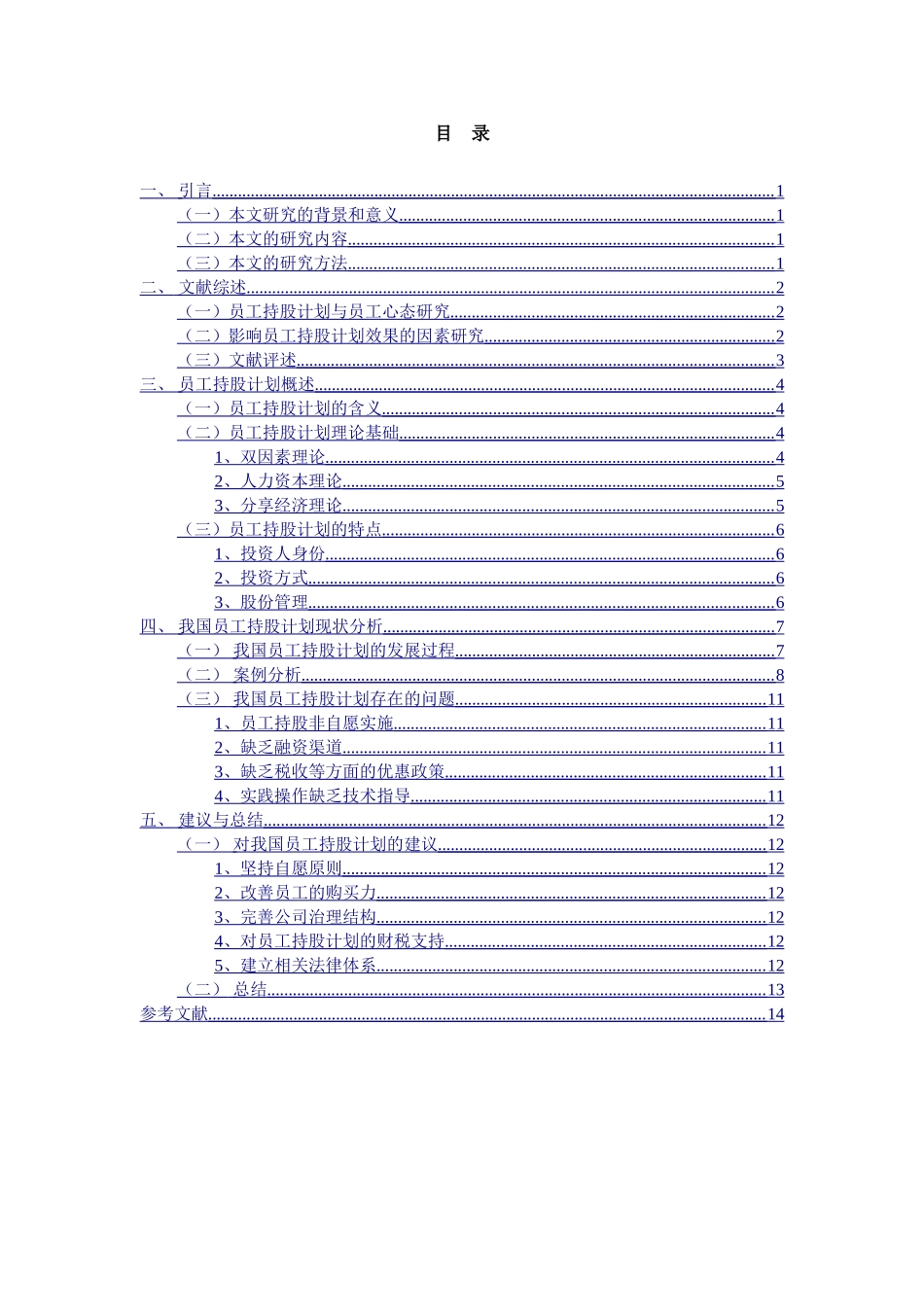摘 要:员工持股计划最早产生于 20 世纪 60 年代的美国,由路易斯·凯尔索提出,后因美国立法支持得到了快速发展,在较短的时间内迅速扩展到世界上其他国家,并得到了广泛应用。虽然员工持股计划的发展历程不长,但它却带来了显著的经济效果,显示出了强大的生命力,动摇了传统资本注意市场经济的根基,从而愈发引起各方面的广泛专注和重视。自上世纪八十年代至今,我国在员工持股计划相关理论研究方面取得了不少成就,但是也不可避免地产生了诸多问题需要进行进一步的探讨。研究对员工持股计划的分析与探讨建立在对员工持股计划的内容和基本特征进行把握的基础之上,融合人力资源管理理论及实践中的常用的“人力资本理论”、“双因素理论”以及“分享经济”等理论架构,明确了员工持股计划实施的现实需要和激励意义。同时,以平安保险公司的案例作为切入点对我国员工持股计划实施的现状进行探讨,通过对平安保险实施员工持股计划过程中出现的问题及其成因的把握,对我国企业员工持股计划的发展和完善给出了相应的建议。关键词:员工持股计划;员工忠诚度;企业;股权激励The Analysis of Enterprise Employee Stock Ownership Plan——A Case Study of Ping An Insurance CompanyAbstract: The employee shareholding plan was first developed in the United States in the 1960s, and was Louise Kerso by the U.S. legislative support, which rapidly expanded to other countries in the world in a short time and was widely used. Although the development course of employee stock ownership plan is not long, it brings remarkable economic effect, shows strong vitality, shakes the foundation of traditional capital attention to market economy, and causes more and more extensive attention.The relevant theoretical research and time development of Chinese Enterprise employee shareholding plan began in the 80 's, and in the course of these years, many achievements have been made and many problems have been produced. Based on the contents and characteristics of employee stock Ownership plan, this paper based on the theories of "d...


